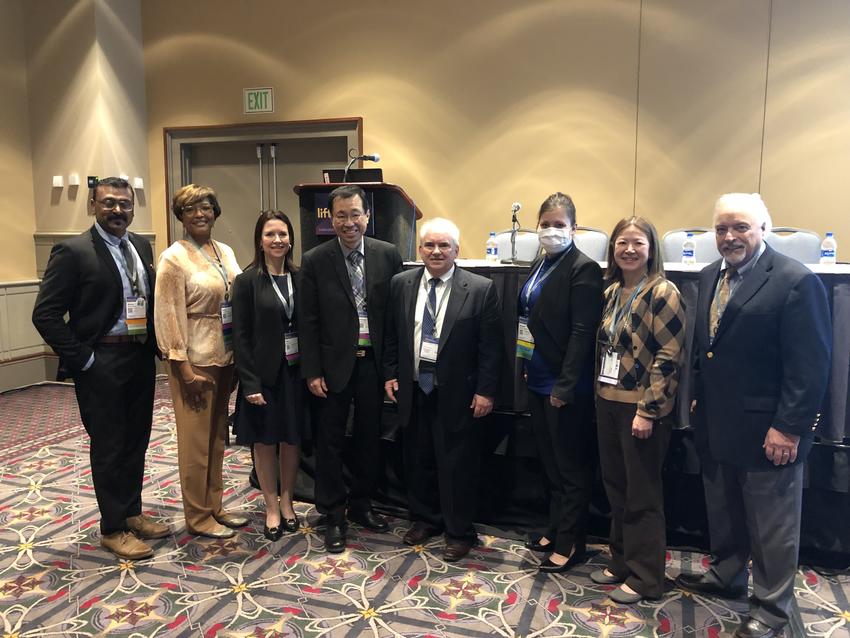Uppgaard shares responsible opioid strategies at ADEA

As the opioid epidemic continues to rage on and take lives, School of Dentistry faculty are working to cut off the problem at its source—by providing better alternatives to pain management and teaching the next generation of oral health practitioners to be opioid aware.
Rachel Uppgaard, DDS, clinical associate professor of oral and maxillofacial surgery, shared that work with fellow educators at the American Dental Education Association’s annual meeting in Philadelphia. As part of a presentation and panel, Uppgaard joined seven other dental educators to share what their schools are doing to foster a healthier relationship with pain management.
As a practicing clinician, Uppgaard provided conference attendees with an overview of the school’s opioid treatment education. It begins in pre-clinical courses, including Uppgaard’s own Pain and Anxiety course, Oral Surgery II and Pharmacology. “We start their education in preliminary courses, so that students get a background on opioids from the beginning,” she explained.
“Then, they get to see what pain management looks like first-hand in the clinics.” In addition to being a major part of students’ experience in an oral surgery rotation, they learn about the school’s non-opioid pain management protocol and use of the prescription monitoring program. “One of the things that I shared with the group is that, in our division, we focus a lot on communication,” Uppgaard said. “We talk about expectations, and we’re up front with our patients. We also make sure to maintain consistent messaging and communication every step of the way, from what they hear at the front desk to what they hear in the surgery suite.”
Uppgaard feels the school’s protocol has been successful—something reflected in the decrease in the number of prescriptions per month since protocols were instituted in 2016. “I think what’s helpful to keep in mind looking at this data is that, actually, our number of surgeries per year has increased,” she said. “So, we’ve been able to maintain lower levels of opioid prescriptions even as our surgeries have increased.”
Uppgaard also pointed out that the average number of doses per prescription have decreased, an important aid in avoiding addiction, and that she and fellow division members have found alternatives to using fentanyl in oral surgery sedation and general anesthesia.
These steps have made a difference in opioid prescriptions for dental patients—and Uppgaard views this topic as particularly important when it comes to oral surgery. “In dentistry, and in oral and maxillofacial surgery, this is a lot of patients’ first experience with surgical pain,” she explained. “We want to make sure we’re not exposing people to unnecessary opioids and contributing to the epidemic. If we use them, we want to be sure to use them as responsibly as possible.”
Uppgaard was grateful to have the opportunity to share on such an important topic with fellow dental educators. “I hope they take away that it can be done,” she said. “That they realize it is possible to increase the numbers of surgery in your division while also keeping the number of opioids down. And I hope this inspired them to think outside the box, making sure their students are getting exposure across the board and not just in one area.”
